The Best Food (That You’ll Actually Enjoy Eating) for Your Emergency Prep Kit
In the best-case scenario, your emergency kit will never be needed. But if it is, you’ll need to be prepared for anything. Preparedness is key in every situation and that includes food. You need a variety of foods so that no one gets sick or tired of eating the same thing over and over again! This blog post will talk about all of the best options for emergency meals and prepackaged food that tastes great but doesn’t require refrigeration or cooking!
Let’s face it nobody really wants to have to think about terrifying emergency situations. But the fact of the matter is that they happen. It’s best to be prepared as best you can because it could make all the difference in the world when your emergency bag is needed.
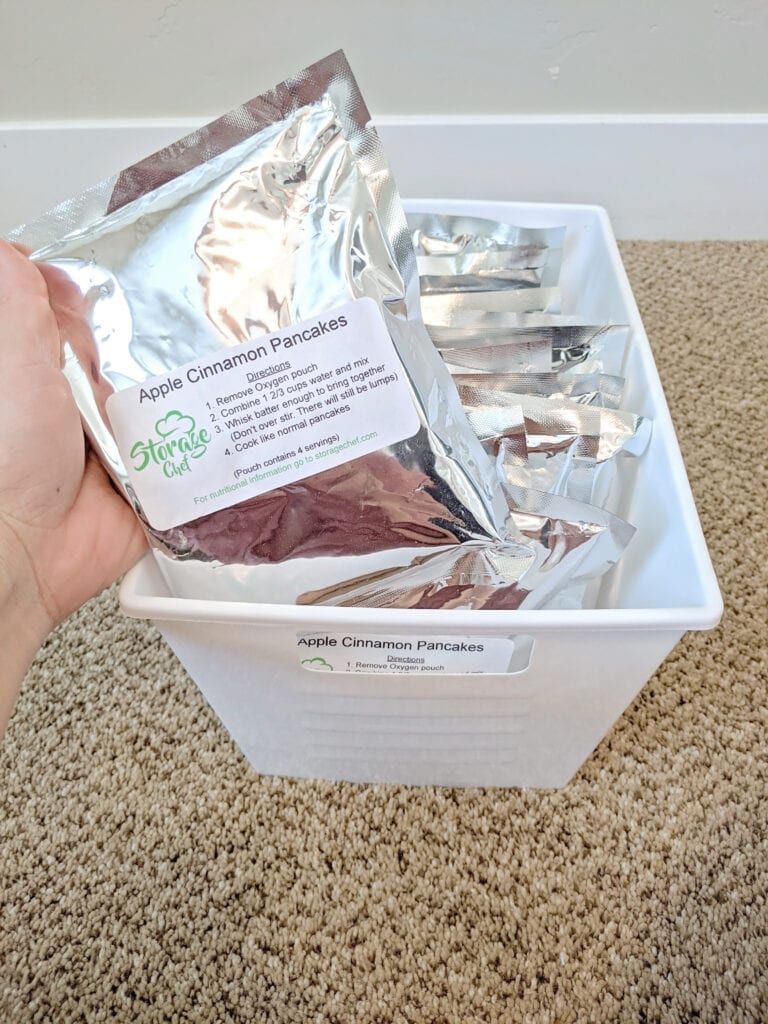
The first things that should go into an emergency prep kit are meals and food items with a long shelf life. These foods will not spoil or lose their nutritional value after being stored for years on end! Freeze-dried food is great because it only needs water to rehydrate, but other options like canned pasta have been shown to still retain much of its original nutrition when left untouched for up to 25 years!
11 Tips for Building an Emergency Food Supply
Building an emergency food supply can be a very overwhelming task. Some people don’t know where to begin so they never actually start! But there are some important steps to help you build your emergency food supply.
- Determine how much food you need. This will depend on the number of people in your family, whether or not anyone has special needs (such as allergies), and if you require particular dietary restrictions.
- Make a list of what foods are best for emergency kits: canned goods; freeze-dried meals; easy to make mixes like pancake batter or brownie mix that only need water added, etc. Once again this depends on personal preference and any personal requirements such as specific diets.
- Don’t forget about the water! You’ll want to have at least one gallon per day per person stored up just for emergencies – even more important than the food itself!
- Choose items that are shelf-stable. Shelf-stable means the food can be stored for a long period of time without spoiling.
- Avoid items that require refrigeration, cooking or preparation other than adding water.
- Choose foods that are high in calories and nutrients.
- Pack your emergency bag with dry goods such as cereal, pasta-type food like macaroni and cheese which only need boiling water added
- Canned soups are a great option for a quick meal. It’s best to have low sodium versions if you’re planning on eating these regularly during an emergency since they’ll lead to more salt intake
- You don’t want anything perishable in your prep kit
- Pack items that are ready to eat. Cooking a meal from scratch can be really burdensome and overwhelming in an emergency situation.
What is the best survival food with a long shelf life?
There are many different types of survival foods out on the market today. Though not all foods that are best for survival will have a long shelf life.
A great option if you want to add weight and calories, but don’t need anything with too much of shelf life is adding extra canned goods to your prep kit. Canned vegetables or fruits can be really helpful in an emergency situation because they’re already packed full of nutrients and vitamins.
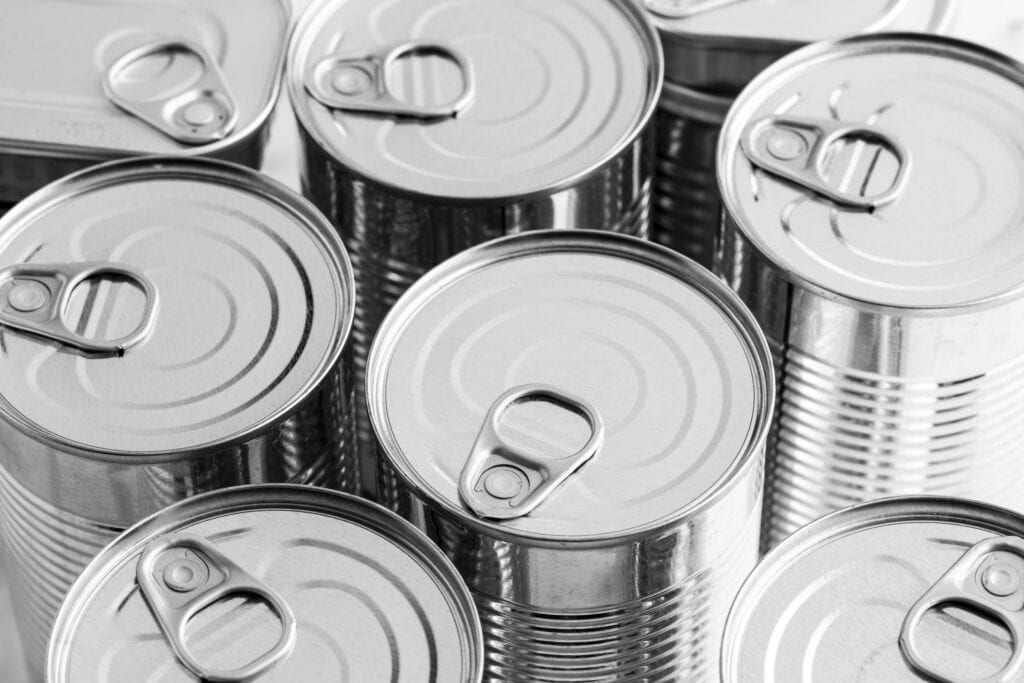
Another type of food best for survival would be freeze-dried meals. These types of meals only require water added when needed so there’s no worry about spoilage from the beginning ingredients. Freeze-dried spaghetti and other pasta dishes work best because they only require boiling water added to create them again!
Another important thing to point out is that while it is good to have a stockpile of flour, sugar, and rice, it’s also important to have food storage that is already put together in a meal. This takes the stress out of preparing a full-blown meal. Choosing to add emergency food that is already prepped into ready-to-eat meals can relieve large amounts of stress and make an emergency situation a bit more bearable.
The best food for emergency kit that I use for my own family is the Storage Chef Meals. It’s important to stock up on bulk supplies but I think it’s important to balance it out with long-lasting complete meals. These are great for emergencies because all you have to do is add water and you don’t have to worry about creating a meal out of tons of different ingredients. Use the code “PracticalPerfection” at checkout for 15% off your order!
They are also great for providing you with high-energy foods that are particularly important in a disaster. I really love these pre packaged meals because they have the instructions taped to the front of each bag, there is a huge variety from breakfast to dinner to dessert (even things like vanilla pudding or chocolate milk!).
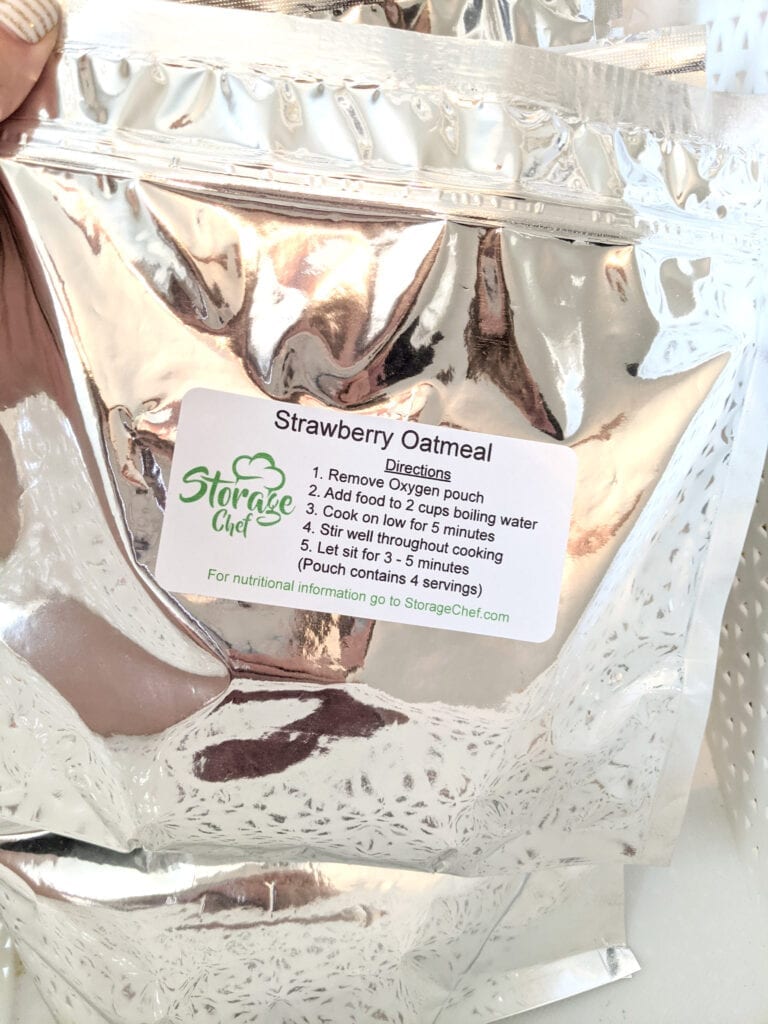
Storage Chef Meals can stay at room temperature and have long expiration dates. It’s easy to stock up on bottled water and simply pour it into the Storage Chef pouches (or cook according to package directions) for a fast, easy meal during a natural disaster. Or you can even rehydrate the food using a gallon of water. These are especially great for your 72-Hour Kit where you can stock up for your three-day supply. They also have important fruits and vegetables in many of their pouches. My particular favorite is the Strawberry Oatmeal! Use the code “PracticalPerfection” at checkout for 15% off your order!
Which foods have the longest shelf life?
The best emergency food for your emergency food supply is freeze-dried food. Freeze-dried food is created when perishable foods are at the peak of their freshness, preserving the nutrients at the highest level. Freeze-dried food also has the longest shelf life at about 25 years! So while gathering emergency food can be a daunting task, it’s much more practical if it will last you for many years to come.
When deciding what types of food storage to buy, pay close attention to the expiration date. MRE’s are another great option for 72-Hour Kits but the food expires in 8 or so years.
Emergency Food According to Shelf Life:
- MRE’s – about 8 years
- Freeze-dried food – about 25 years
- Canned Food – best if canned in the past 12 months
- Bulk individual ingredients for recipes or noodle soup like pasta and rice – best if used within a year.
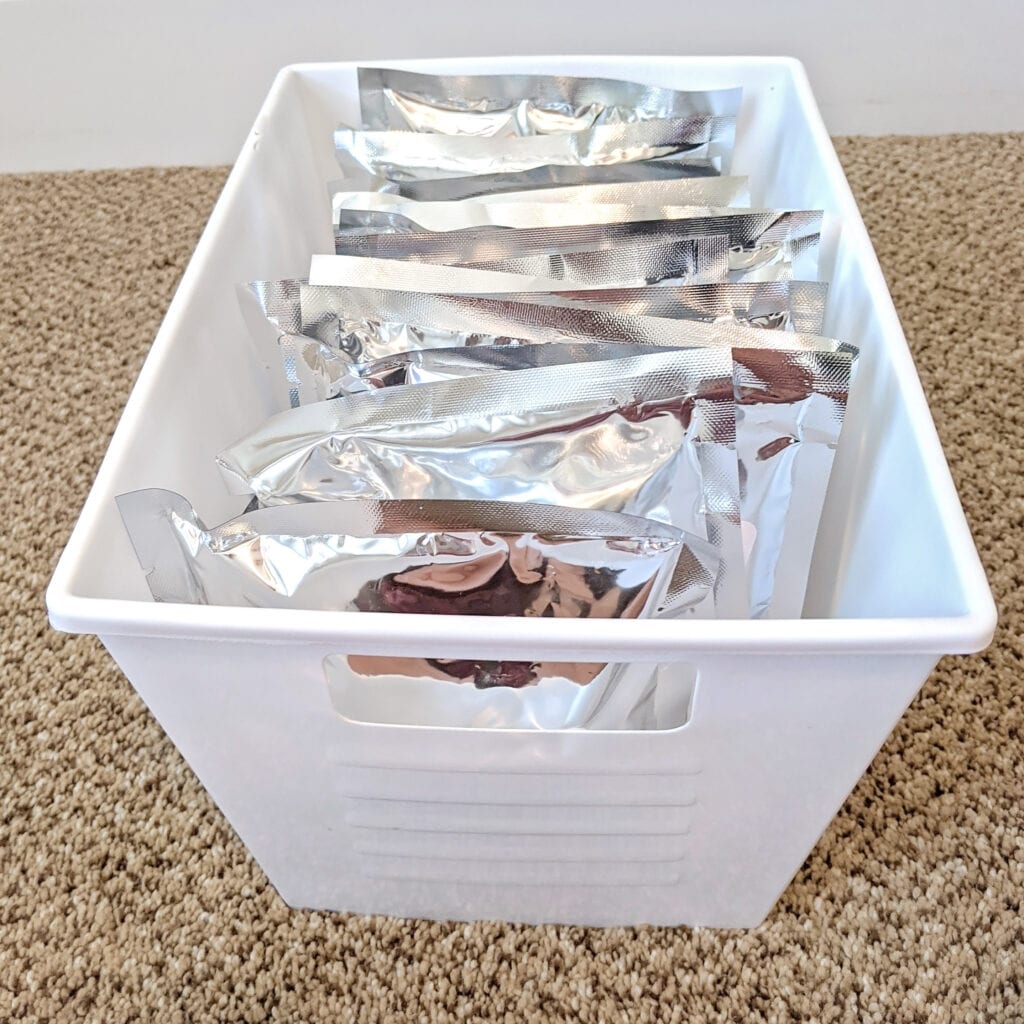
Here are the best food options for your emergency bag:
Freeze-dried food – easy to store and lightweight; you just add water! It will take up less space than cans because it’s not canned. You’ll have more room in a backpack or suitcase if traveling, too. A freeze-dried meal can last upwards of 25 years with proper storage conditions.
MREs – MRE stands for Meal Ready to Eat which is made by the military and meant as an individual ration that has all of one’s daily needs packed into it including calories, protein, carbs, fat, vitamins (A/D/E), minerals (iron).
How to prolong the shelf life of your food?
There are a few things that you can to to prolong the freshness and the shelf life of your food to maximize food safety. First, find the best quality ingredients that you can find into your prepackaged meals because they will last longer than regular items from a bulk bin.
Second, you can store your food in a cool, dry place to help prevent spoilage.
Third, you can store your food in airtight containers. If you are packing your own food, make sure to use the small packets that absorb the remaining oxygen.
How much food should be in an emergency kit?
It can be overwhelming, to say the least when considering how much emergency food to stockpile. The price adds up quickly, not to mention how much space it’ll take up! But figuring out how much food you’ll need is a daunting task. But it’s best to just focus on your 72-hour kit first. A 72-hour stockpile is the best way to get started.
After all, you’ll want enough food for the emergency plus three additional days of meals and snacks on top of your kit. The best advice is just to start small – one emergency bag for each family member will be plenty in the beginning as long as they have a variety that’s reasonable with regards to nutritional needs from adults, children, and pregnant women (if applicable).
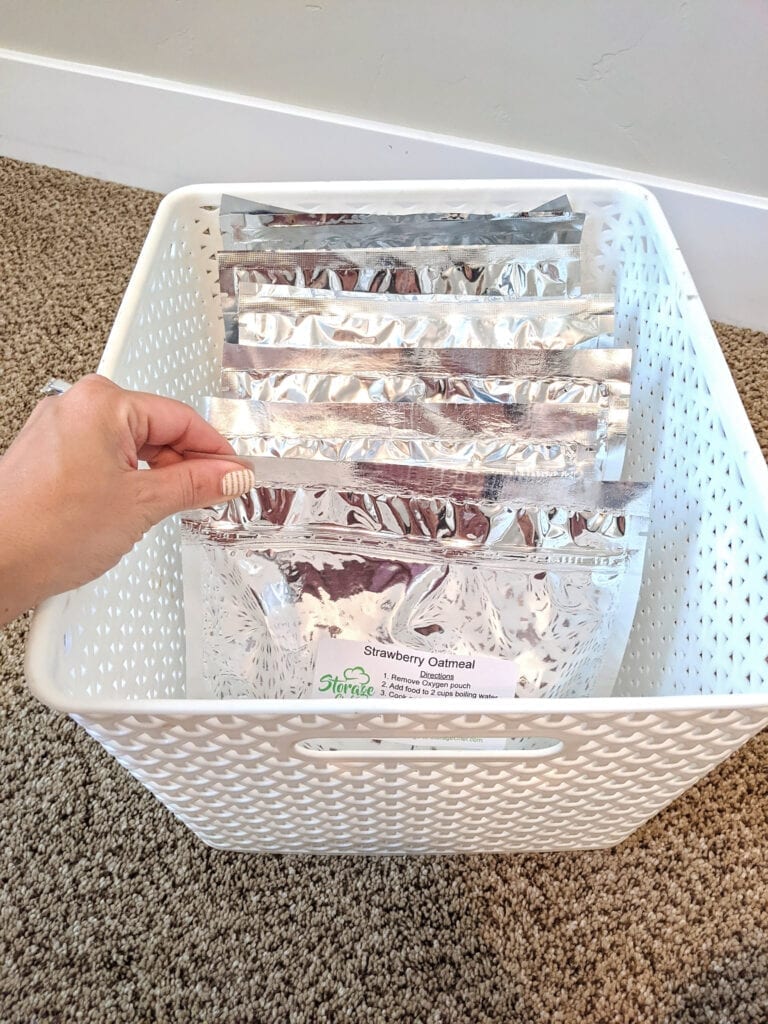
And remember: these foods can also come in handy if there are any type of disaster such as power outages due to snowstorms/hurricanes too! So it definitely pays off to invest in some freeze-dried food like MREs and other canned goods such as soups, fruit cups, trail mix, granola bars. Storage Chef meals also work really well for 72-hour bags because they are really compact and last a long time.
Which emergency food is best?
There are a few things to look for when determining what food supplies will be best for your family. You need to take into consideration expiration dates, how many calories, how many servings, and how well the food will store.
If you are preparing your 72-hour bag, determine how many calories each person in your family may need for each day. Then incorporate that into your emergency supplies. Try and choose foods that have minimal cooking (at least at first) and foods that store easily. Pick a certain place in your home to store all of your food supplies so you know right where to go after a disaster. If you have it spread all over the house, you may forget where some of your supplies are stored.
It’s good to remember to stock snack items too such as hard candies, granola bars, or even crackers. You’ll be grateful for those small luxuries in a disaster situation.
Store food supplies in a cold, dark place. This helps to preserve the shelf life of the food for as long as possible so your food can taste fresh. If you can’t find a cool place at least store them at room temperature.
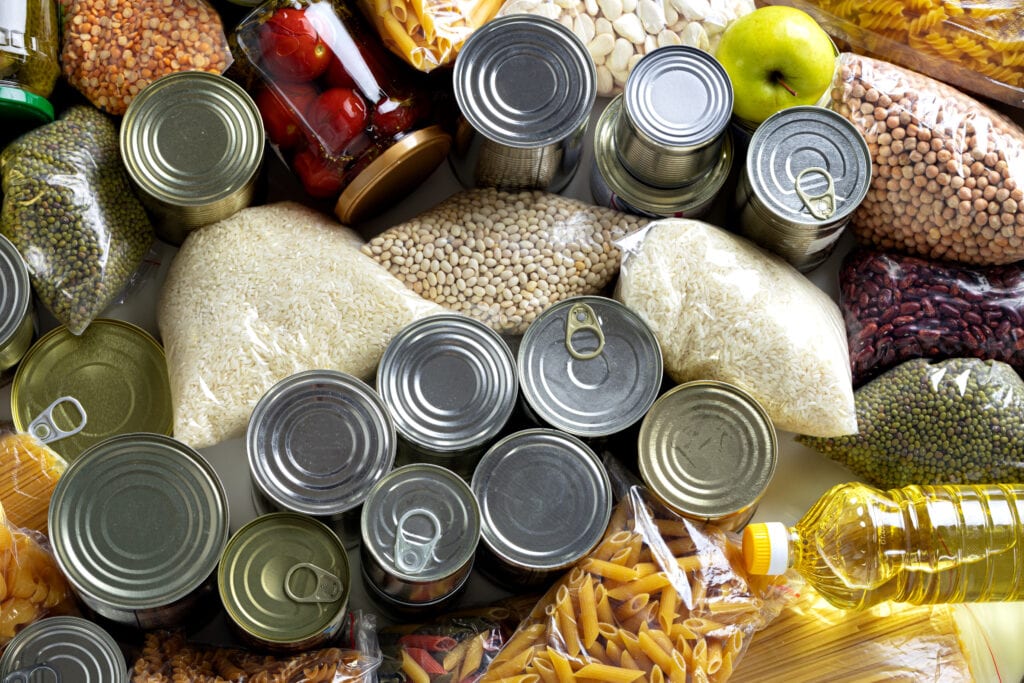
If you are going to stock frozen foods, then it’s important to remember that those are typically perishable food items. Perishable food items should be stored at the lower end (below 40 degrees F) of a refrigerator or freezer.
Finally, it’s best to store your emergency food supplies in airtight containers that are designated for just this purpose. This will help you from not having to worry about them getting contaminated with other foods.
What are the best foods to stockpile?
Food and water are some of the most important aspects to your emergency supplies. Try and stockpile foods that are non-perishable and that are high in calories. Peanut butter is an excellent option because it has a long shelf life and it is high in calories.
If you are trying to store food that needs a lot of preparation, then freeze-dried foods will be best for you because they require just a little bit of water and heat. Freeze dried broccoli might not sound too appetizing but it’s perfect if all you want to do is add hot water from the tap or pour boiling water over your emergency meal with no other preparations required. It’ll taste like home-cooked vegetables!
Some people may have dietary restrictions so be sure to keep these things in mind when stocking up on food. Some common dietary restrictions include gluten-free, vegan, vegetarian, paleo diet, low salt diets, etc. For example, peanut butter wouldn’t be a good food item for emergencies for a family member who is allergic to peanuts.
Here is a list of food supplies that you may consider putting in your food storage stash:
- Canned meats
- Canned Fruits
- Powdered milk
- Freeze Dried Fruit
- Dried Fruits
- Dried Vegetables
- Crackers
- Water
- Peanut Butter (this is high in calories!)
- Canned foods such as soup, stew, or even Spaghetti O’s!
- Granola Bars (great for if you don’t have power)
- Dehydrated dairy products
- Flavored instant oatmeal (great for if you don’t have power)
- Powdered eggs
How to build a Water supply storage
Building a water supply storage is an easy and free way to prepare for emergencies. Having ample water stored for a natural disaster may mean the difference between life or death. It’s best to store water in a cool, dark place for the best shelf life. Pack enough water for two weeks at a minimum if you are short on space. When storing water, it is best not to use plastic containers as they can leech chemicals into your stored H20.
If you have six months’ worth of drinking water on hand and do not live near any natural bodies of fresh or salt water then you are prepared for most emergency situations that may occur within your home city limits. We recommend keeping at least one gallon per day available for cooking food or washing dishes. If you plan on having plenty of time between when an emergency strikes and needing this extra supply then consider using tap-water from the beginning so that it has time to settle before being sealed up in storage containers with airtight tops. Consider the temperature of the space where your water will be stored year-round. Try to put your items in a place where the room temperature stays pretty constant.
You also need to think about stocking supplies to help you purify water that you’ve stored or water that you gather from local bodies of water or streams. Chlorine bleach is best for disinfecting and purifying water, while iodized salt is best for killing bacteria and parasites.
If you are using chlorine bleach, write a note for yourself on how much chlorine bleach to use for each gallon of water. That information might not be available if the power is out and you wouldn’t want to add too much or not enough!
It’s important not to forget about having enough water stored up so you can rehydrate your meals!
Happy prepping!


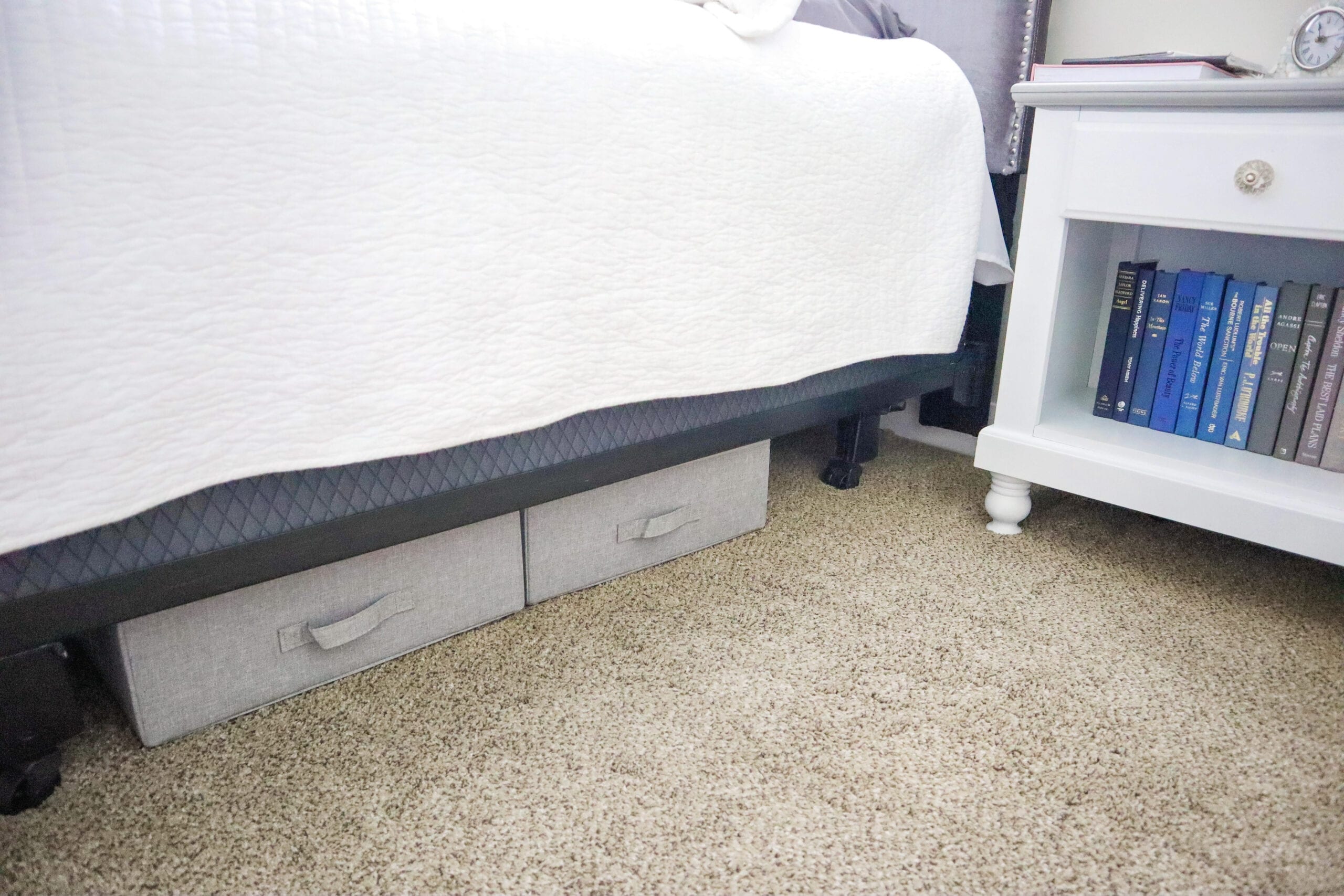
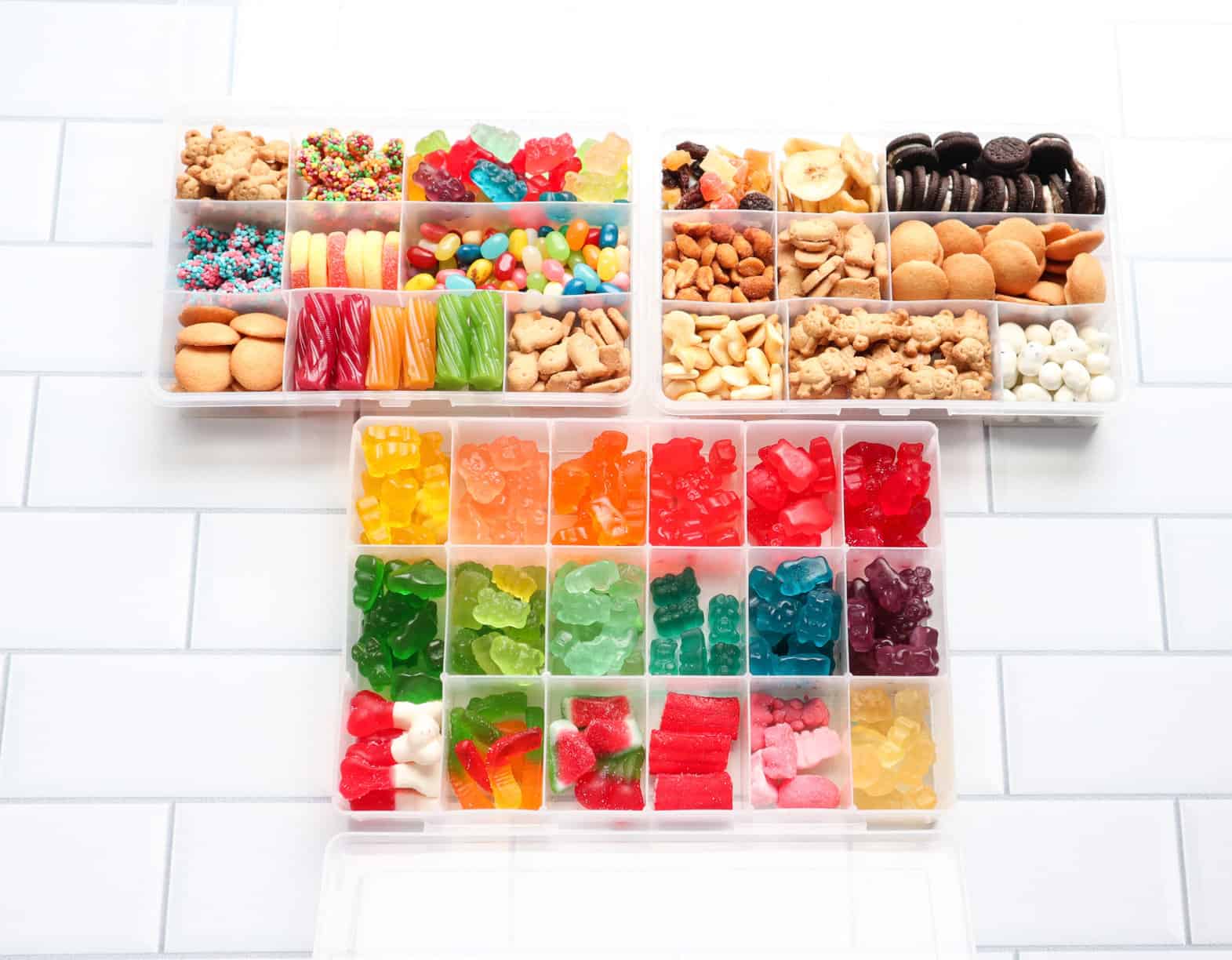


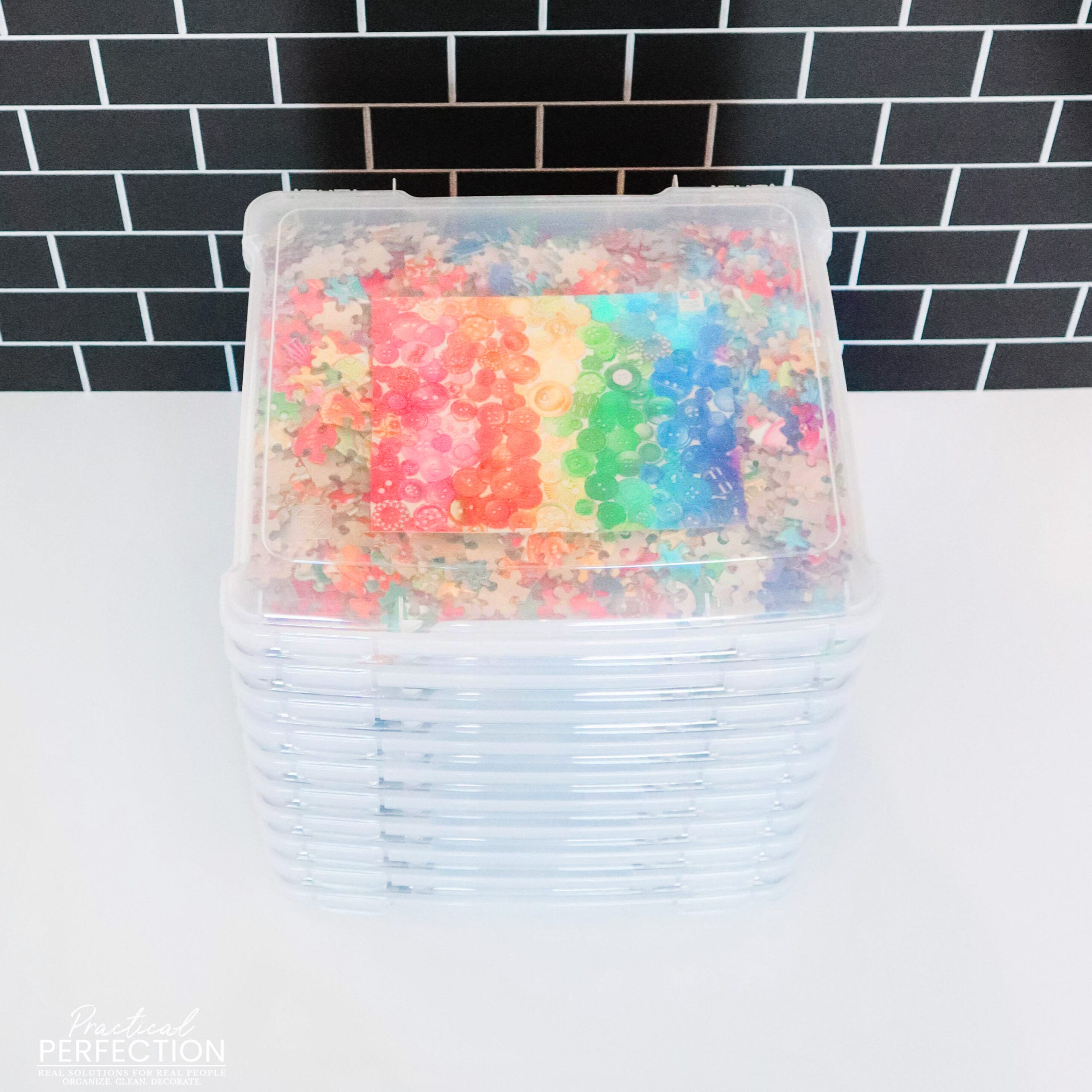
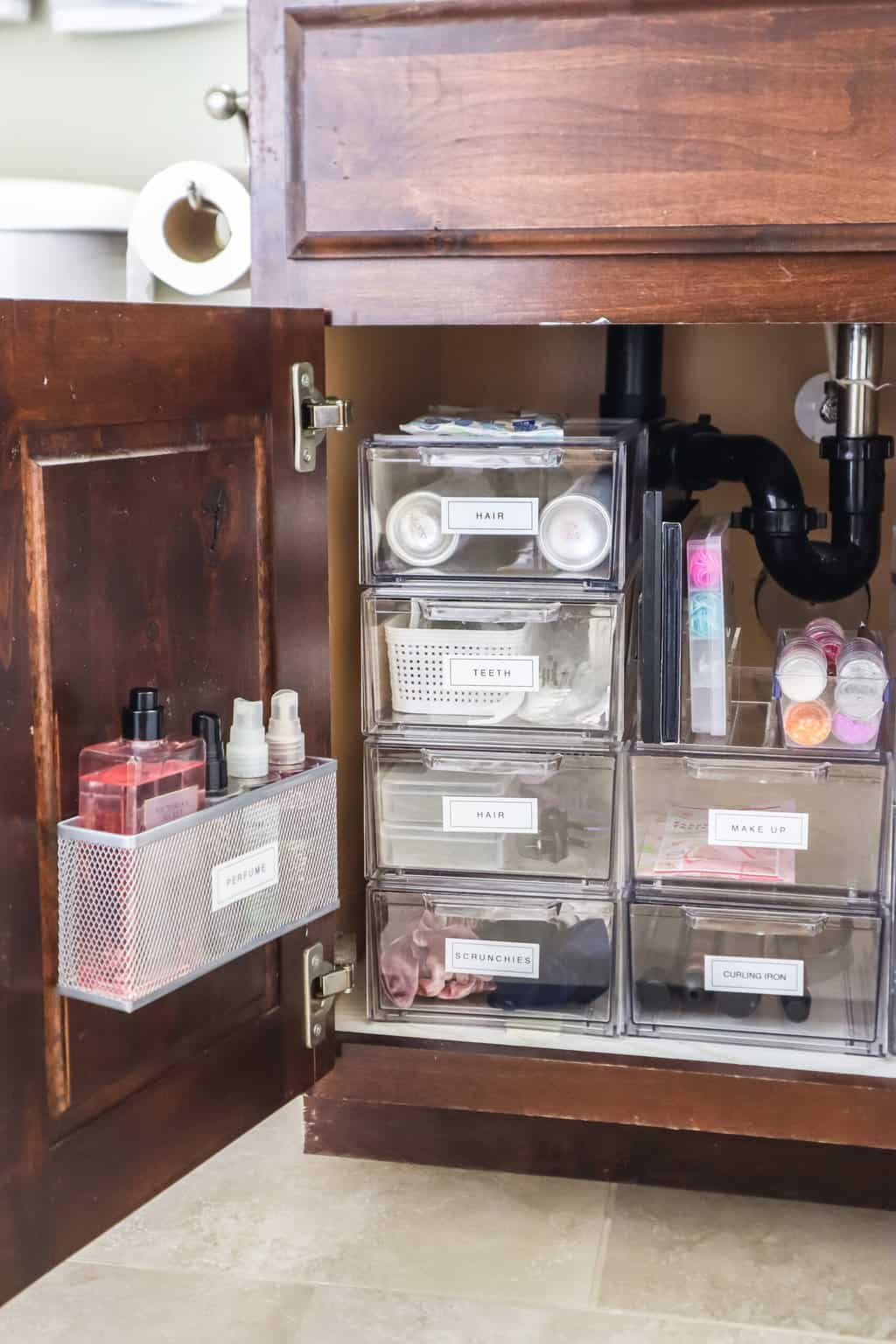
thank you for the idea it’ll help me if whenever nothing would ever happen you know we never know